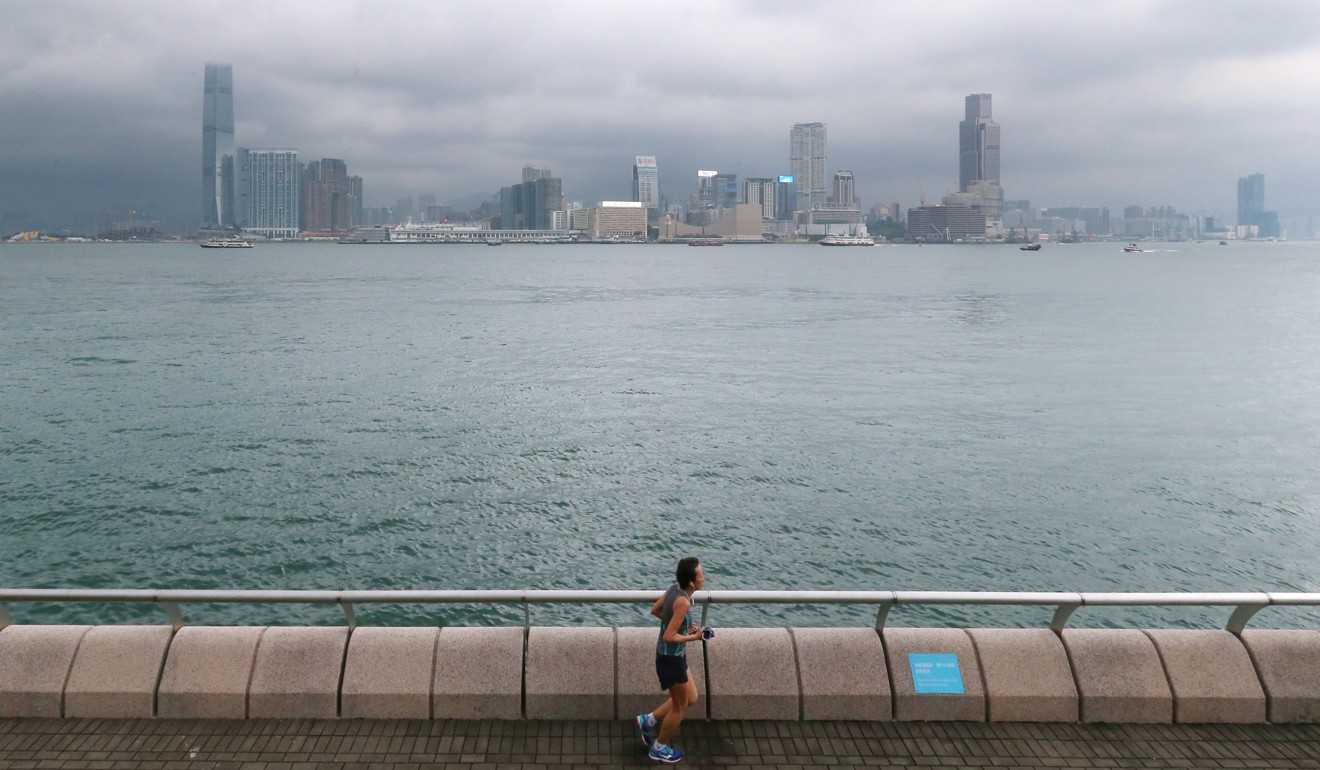
Better coastal defences against typhoons and waves in Hong Kong will protect the city’s road running routes
- Typhoon Mangkhut highlighted the need for Hong Kong to improve protection against extreme weather, which will help road runners follow the coastline
With November's inaugural unofficial 100km Oxfam Trailwalker behind me, I’m taking a break from mountain running. .
With no trail races that I’m signed up for in the immediate future, I’m in search of flatter running. After so many months of hot, slow and long training sessions – many of which have significant portions of power hiking rather than running – it’s time to rediscover the modicum of speed that I hope to have retained. I’m heading for flat terrain such as race tracks, Bowen Road, and sections along the coastline of Hong Kong Island.
But Hong Kong’s coastlines are vulnerable to the effects of climate change, extreme weather and storm surges. Last September’s Typhoon Mangkhut wreaked havoc across the city, not least along the city’s coasts.
In the aftermath, the government commissioned a feasibility study to assess the impact of extreme weather events on the city’s low-lying coastal or windy locations.
“Based on the outcome of the study,” said an official press release from this April, “the government will formulate appropriate protection measures, including improvement works, management measures and other options, to strengthen the resilience to big waves at the coastal areas in the long run.”
But the feasibility study might not be enough, said Designing Hong Kong, a non-profit focused on sustainable development issues. In an email newsletter, the organisation noted that the study merely seeks to outline the problem, but does not actually offer solutions.
The group is calling on the government to broaden the study so that various government departments and local communities can work together to assess the existing vulnerabilities, and collaborate to design and roll out solutions. “Early consultation and cooperation will ensure fewer objections, expedient implementation, greater efficiency, and better relations with the local community,” the group said. “In simple words – we get better solutions faster.”
They gave three ready examples of coastal areas that need better protection.
Sai Kung Town, for example, would do well with a typhoon shelter in front of the town to protect vessels and also safeguard the area from rising sea levels and storms.

Heng Fa Chuen, meanwhile, urgently needs a higher sea wall, and the group notes that “if the government pays for it instead of private property owners who abut the shore, we can make sure the new sea wall includes a promenade for the public to use” – including for strolls and runs.
And Deep Water Bay, popular with runners and often where open water swims and swim-run races are held, also needs better storm protection and pedestrian connections.
The list of vulnerable locations, of course, goes beyond these three places, and include areas such as Shek O, Tseung Kwan O and Lei Yue Mun.
The weather now is dry and crisp, but the rainy season is just up ahead and with it the likelihood of more powerful storms and typhoons. Better storm defences will make Hong Kong more resilient – and help preserve our beautiful coastlines for running.

